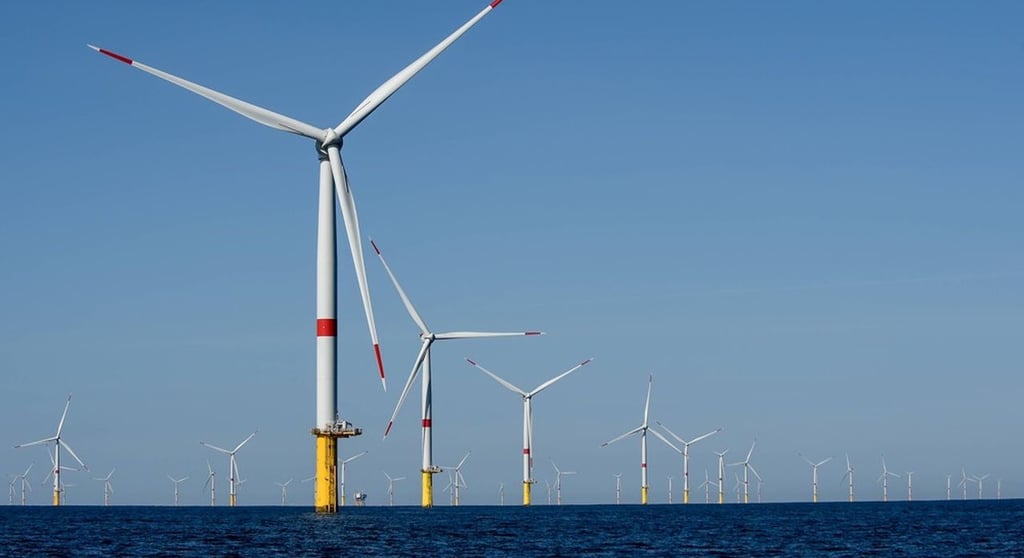Offshore wind power : French projects at a standstill in the United States
AMERICA
Thomas dos Remedios
5/24/20254 min read


AN OFFSHORE WIND ENERGY SECTOR STILL IN ITS INFANCY, WEAKENED BY THE RETURN OF TRUMP
Donald Trump's return to the U.S. presidency in January 2025 immediately altered the country's energy landscape. As soon as he took office, the former president signed a memorandum freezing operating permits and federal funding for offshore wind projects. Effective as of January 21, this presidential decree brought to a screeching halt all projects still in the development phase in US federal waters. The arguments put forward by the Trump administration - protection of marine biodiversity and support for the fishing industry - are in line with the populist, conservative rhetoric of the campaign. The president regularly refers to wind turbines as “visual monsters”, going so far as to accuse them, without scientific proof, of being responsible for whale deaths and damaging seascapes. In reality, this decision is part of a broader policy of explicit support for fossil fuels, the traditional pillars of the American economy, and for energy independence through oil and gas.
This turning point comes at a time when the US offshore wind industry was just beginning to take shape. Under the Biden administration, the country had set itself an ambitious target of 30 GW of installed capacity by 2030, compared with just 0.04 GW in 2023, i.e. barely 1% of the world total. The federal government had already allocated several maritime zones off the East Coast, including some near Massachusetts, New York and New Jersey, with the intention of creating a new industrial sector. But this sudden turn of events calls into question not only the physical construction of the parks, but also the financial and administrative mechanisms that make them possible. Projects located in federal waters - which extend from three nautical miles (around 5.5 km) off the coast - depend on complex authorizations issued by several agencies: the Bureau of Ocean Energy Management (BOEM), the Environmental Protection Agency (EPA), and sometimes even the Department of Defense, in the case of sensitive military zones.
FRENCH COMPANIES HIT HARD : FINANCIAL LOSSES AND STRATEGIC WITHDRAWAL
The U.S. presidential decision has hit several major French companies heavily involved in the development of offshore wind power in the United States hard. Among them are TotalEnergies, EDF and Engie, who were counting on this market to diversify their activities and meet their 2050 carbon neutrality targets. TotalEnergies, the first company to react, announced back in November 2024 that it was putting the Attentive Energy project on hold, a vast park planned off the coasts of New Jersey and New York, with an estimated capacity of 3 GW. The French group holds a 56% stake in the project, alongside the UK's Corio Generation (a subsidiary of Macquarie) and the US company Rise Light & Power. The project was to supply electricity to over two million homes, with commissioning initially scheduled for 2029. According to CEO Patrick Pouyanné, this freeze could last “at least the duration of the presidential term”, i.e. until 2029, in the hope of a political turnaround at the next election.
EDF Renewables, for its part, is involved in the Atlantic Shores project, an offshore wind farm with a capacity of 2.8 GW, also located on the east coast and owned equally with Shell. At the time of publication of its 2024 annual results, EDF had to book an impairment of €934 million, illustrating the direct economic consequences of the new political context. This loss is all the more significant because it follows the cancellation of a call for tenders in New Jersey at the beginning of February 2025, then the withdrawal of a federal permit by the EPA in March, despite an authorisation issued in October 2024 by the BOEM. Finally, Engie, partner of Portugal's EDPR in the Ocean Winds joint venture, has also been forced to scale back its offshore projects. Two were planned for the Atlantic coast, and a third off the coast of California. These projects, in which the French state still holds almost 24% of Engie's capital, have been written down by €133 million in the group's 2024 balance sheet. EDPR is saying the same thing, citing a ‘stalled situation’ and a reorientation towards European and Asian markets.
A STRATEGIC REFOCUSING OF EUROPEAN COMPANIES ON MORE STABLE MARKETS
Faced with regulatory and political uncertainty in the US, European energy companies are reassessing their priorities. According to Pierre Tardieu, Director of Public Affairs at WindEurope, companies will now be ‘refocusing on the European market’, where energy transition policies, while imperfect, remain more coherent and predictable. The European market, particularly in the North Sea, continues to be the main driver of global wind energy development. The UK, despite Brexit, remains the European leader with over 14 GW of installed offshore wind capacity, followed by Germany (8 GW) and the Netherlands (4 GW). What's more, the Scandinavian countries (Denmark, Norway) and Portugal are stepping up their development, in some cases with floating wind turbine projects, a promising technology for areas with steep gradients.
At the same time, Asia is becoming a credible alternative. China already dominates the global market, with more than 30 GW installed by the end of 2023, largely in the coastal provinces of Jiangsu and Guangdong. Japan and Taiwan are also developing policies favourable to offshore wind power, notably by investing in flotation technologies and public-private partnerships. This shift towards more politically stable areas could accelerate technological innovation and lower production costs.
A U.S. ENERGY TRANSITION THREATENED WITH PARALYSIS
The abrupt withdrawal of European players from the US market could have lasting consequences for the US energy transition. While solar and onshore wind projects - often located on private land or governed by state laws - remain relatively unscathed, the offshore sector, central to large-scale decarbonisation, is now in jeopardy. The case of the Empire Wind project, led by Equinor off the coast of New York, is emblematic. Comprising 54 turbines, the wind farm has been in the construction phase since 2024. But in April 2025, the federal authorities ordered a halt to construction, citing the need for further studies. This move was interpreted by investors as a negative signal. The Norwegian group has also indicated that it may withdraw from the project if it does not find a solution ‘quickly’.
More generally, the blocking of offshore projects is preventing the creation of an American industrial base in a sector that is growing rapidly elsewhere. Assembly ports, specialised vessels, technician training: the whole ecosystem is struggling to emerge without regulatory visibility. In the long term, the United States could not only miss the target of 30 GW offshore by 2030, but also find itself falling behind Europe and Asia in the race for energy transition.
Thomas dos Remedios, pour SPECTIO
Les propos exprimés n’engagent que leurs auteurs et ne reflètent pas la position du Think Tank Spectio.
